Do you like the quirky way Jade trees look? Are you curious about Jade trees and want to plant your own? Maybe you want a Jade tree but are unsure what type you should get?
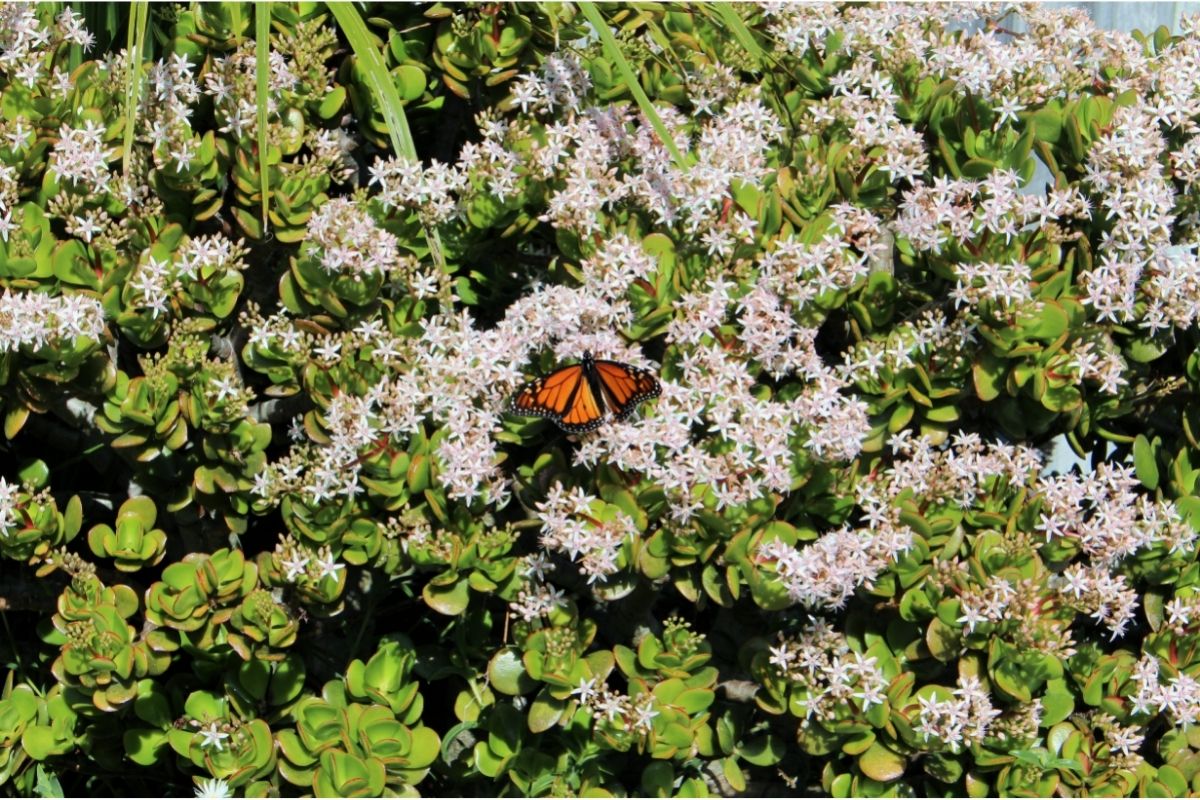
Whatever the reason might be, we have the answer for you!
When it comes to Jade trees, we know how difficult it can be to tell some apart and find the right one for you.
With so many different types out there, all with their own character, it can be overwhelming to identify them and even know which one you want.
Well, no more! Today we are here with a complete article about the different Jade trees, what they look like and where they grow.
Just keep reading to find out more and become a Jade tree expert today!
1. Crassula Arborescens
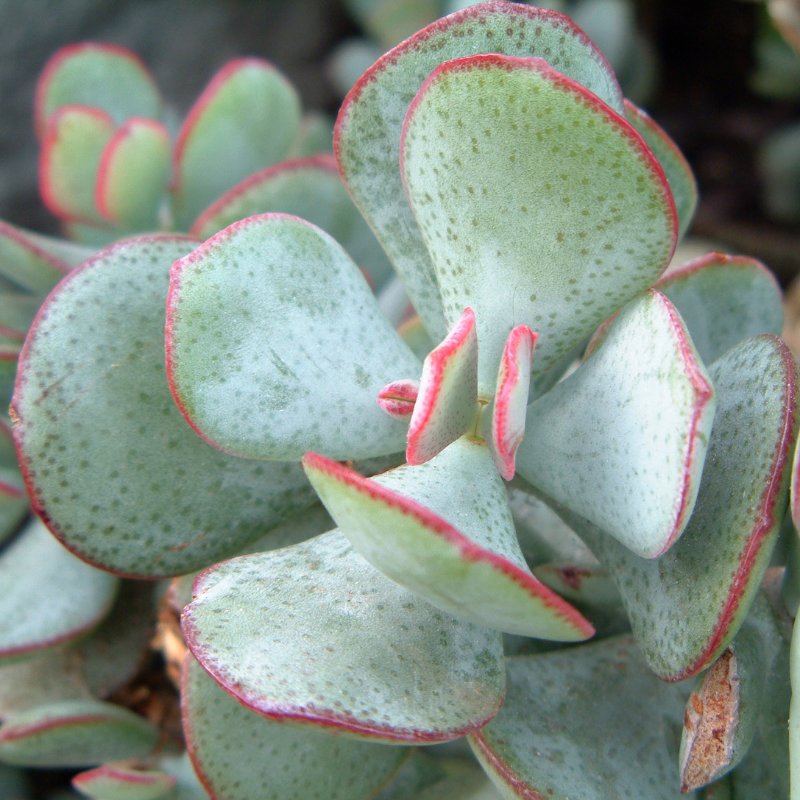
Crassula Arborescens forms a thick succulent shrub that grows very slowly. The leaves are blue-gray with a subtle burgundy edge.
This creates a wonderful contrast, particularly because this kind of Jade tree grows beautifully white-pink flowers that appear in the autumn and winter.
It can grow up to 60 cm tall but you can easily plant it in a pot to restrict its growth.
2. Crassula Arborescens Blue Bird Variegata

Slightly on the smaller side with 50cm, the BlueBird Variegata Jade plant is perfect for planting in pots.
This Jade tree grows very slowly with thick, succulent leaves. The unusual color combination of red, green, cream and aqua makes this plant a real eye-catcher.
3. Crassula Arborescens Undulatifolia
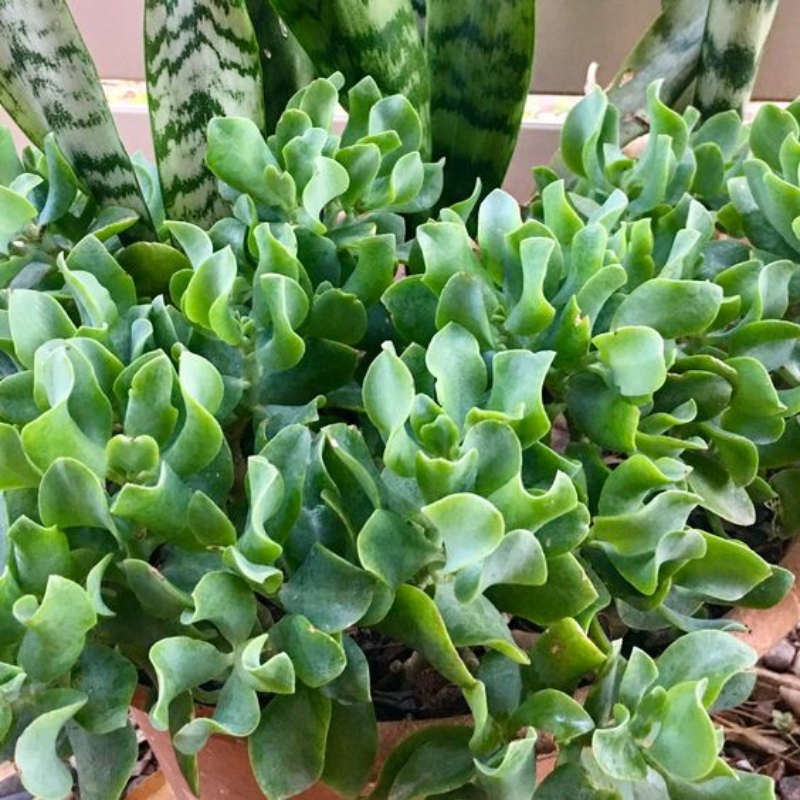
Undulatifolia also grows white and pink flowers like Crassula Arborescens but Undulatifolia’s flowers are star-shaped appearing at the top of the plant during the winter months.
As it can grow up to 1m tall, this so-called Ripple Jade plant is perfect for landscaping projects and creating more decorative containers.
This hardy shrub is drought tolerant and its compact growth with woody stems creates a stunning contrast.
4. Crassula Argentea Gollum

Crassula Argentea Gollum flowers during the late autumn months. Its pretty small pink and white flowers add some interest to the wooden stem appearance of this Jade plant.
The Gollum Jade has glossy green leaves that are shaped like fingers with a red tip.
This slow-growing shrub is used to dry conditions but also enjoys the partial shade.
5. Crassula Ovata Red Coral

Crassula Ovata stands at a height of 90 cm tall and its strong, green leaves have a particularly unusual shape.
The red coral tips make this one of the prettier Gollum Jades.
Unlike some of the other Jade plants, it flowers in spring with beautiful, small pinkish flowers.
6. Crassula Ovata
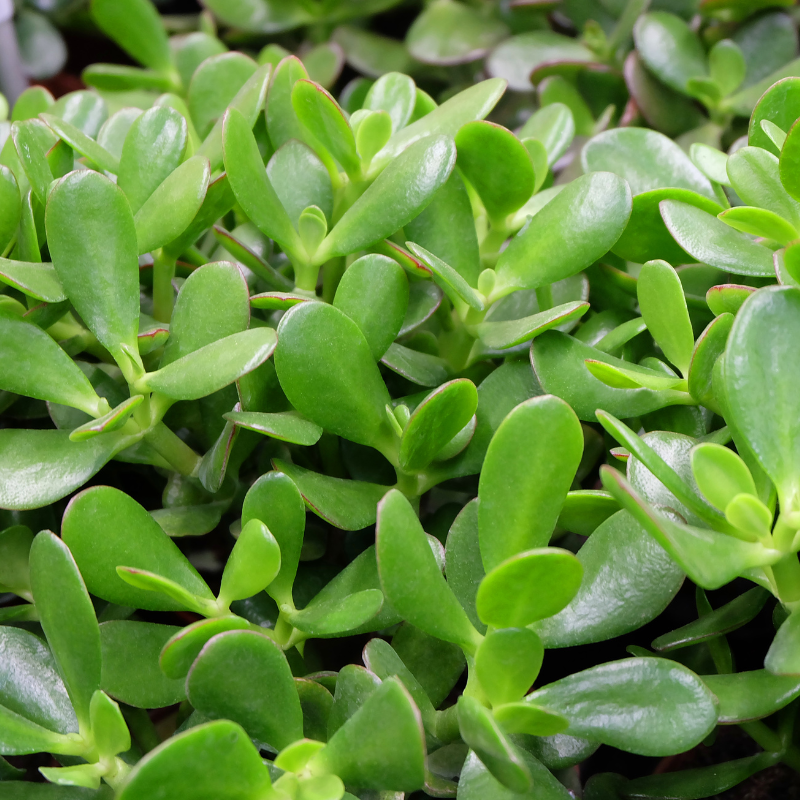
Crassula Ovata stands at an impressive 2 m tall but you can also control the size by putting it in a container or trimming the leaves regularly.
One of the fastest-growing Ovata Jade plants, it responds well to trimming and is therefore ideal for cultivation.
Its hardy nature means you can even grow it in direct sunlight or cooler climates.
It flowers in winter with little whitish-pink flowers.
7. Crassula Ovata Botany Bay
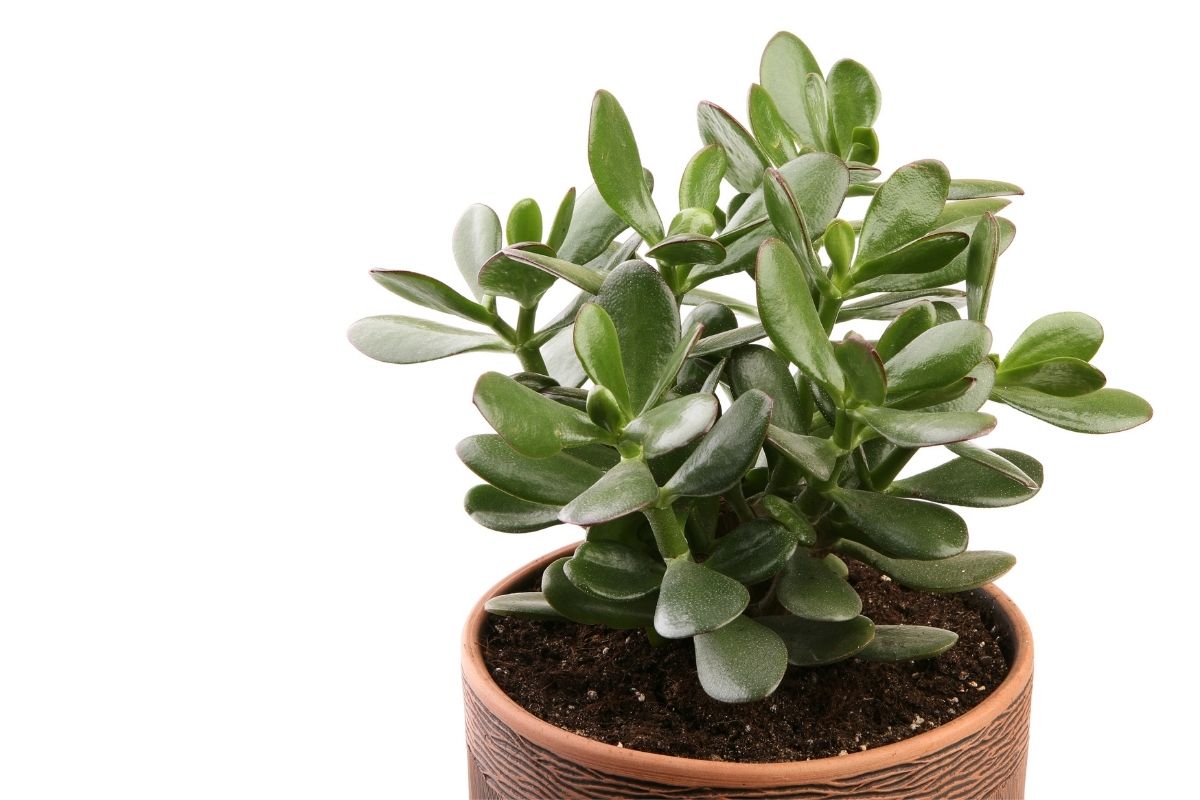
One of the most popular types of Jade plants with cultivars, Botany Bay can grow up to 1 m in 5 years.
This takes some careful planning for any landscaping project but its beautiful pink and white flowers in the late autumn and winter period make up for this.
This hardy shrub’s foliage responds to very dry conditions by developing a red blush.
8. Crassula Ovata Crosby Red
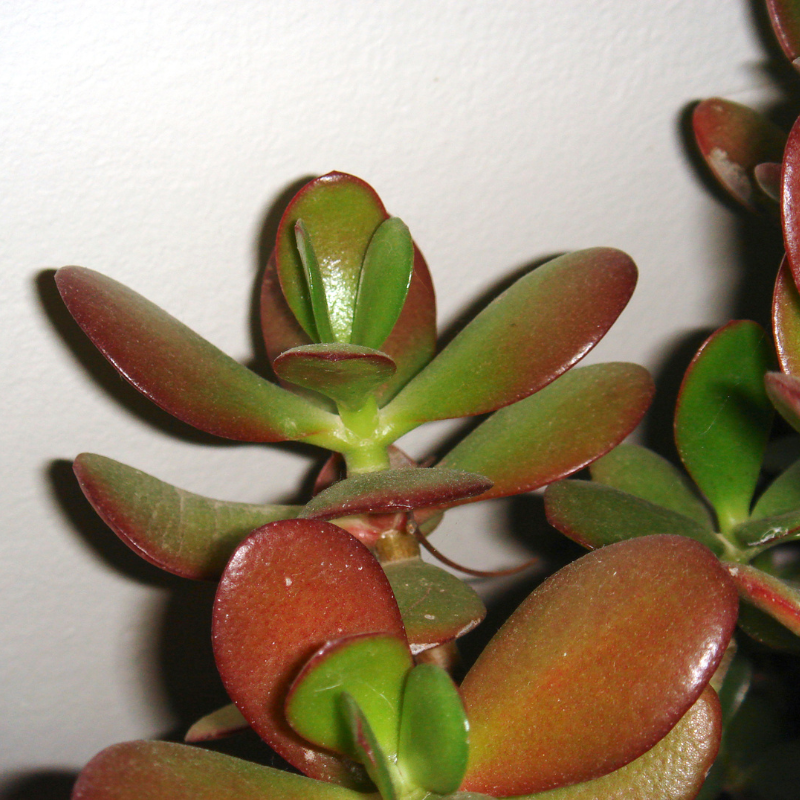
If you grow Crosby Red in the ground it can reach up to 80 cm. It’s also ideal for containerization where you can control the shrub’s growth.
While this Crassula Ovata variety does grow the usual small whitish and pink flowers in winter, it’s not producing as many flowers as some other common Jade varieties.
Crosby Red is also much slower growing than most Jade plants. A big plus for cultivation is that it stays quite compact and holds its shape well.
9. Crassula Ovata Harbor Lights
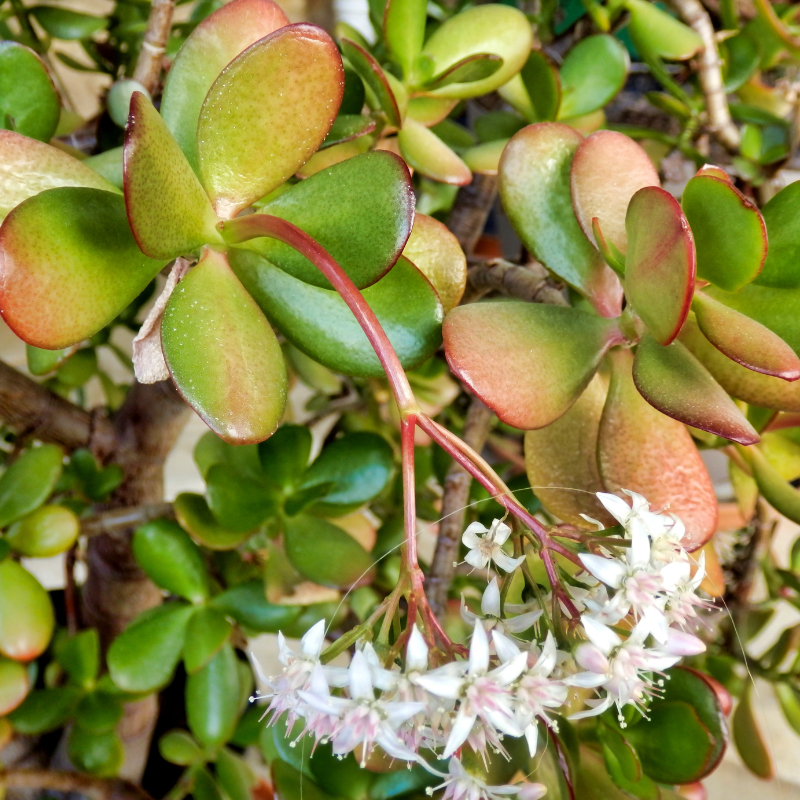
This particular Crassula Ovata variety was introduced in 2014 as a shrub that grows well in pots.
Its smaller leaves with an intense red color create a stunning display when it produces white and pink flowers in winter.
10. Crassula Ovata Hobbit

Another dwarf Jade plant, Hobbit, is just 30 cm tall and therefore makes the ideal indoor plant.
Its pinkish and white flowers in early winter create an attractive contrast to the lush green foliage.
Crassula Ovata Hobbit is usually labeled as Bonsai Jade Tree. This naturally makes it very appealing for growing in a single pot or a container with other shrubs.
This Jade plant prefers full sun to partial shade and it develops red leaves when it’s under stressful conditions.
11. Crassula Ovata Hummel’s Sunset
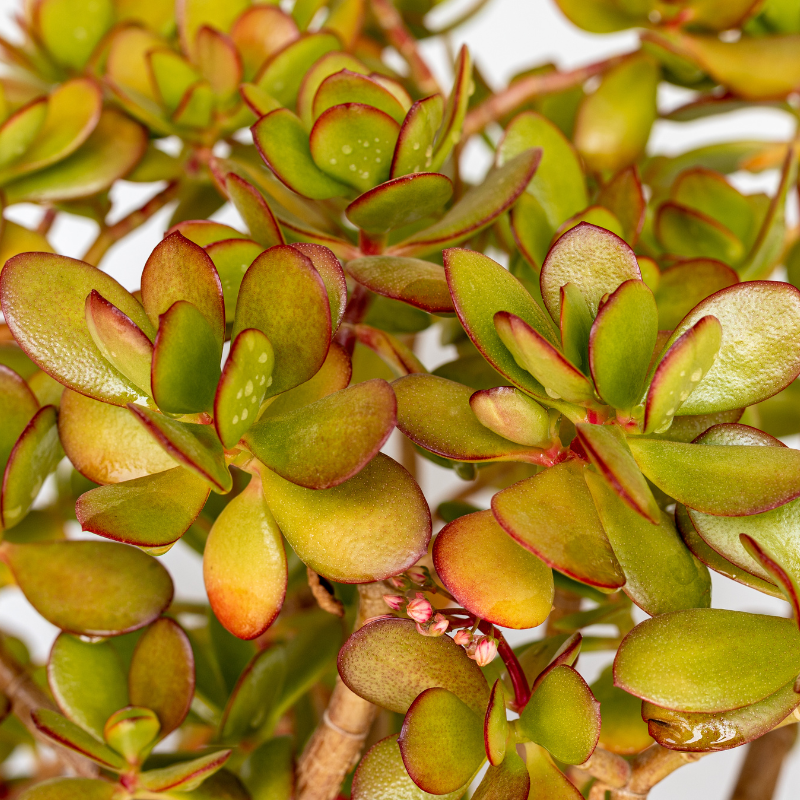
The Hummel’s Sunset is one of the best-known Jade plants. It has even received the Royal Horticultural Society’s Award of Garden Merit in 1992.
Its small star-shaped flowers may not always show during cultivation but it’s perfect for growing in pots.
The Bonsai-style trunk and its green, red and golden foliage in winter create an impressive effect.
12. Crassula Ovata Little Jade Tree
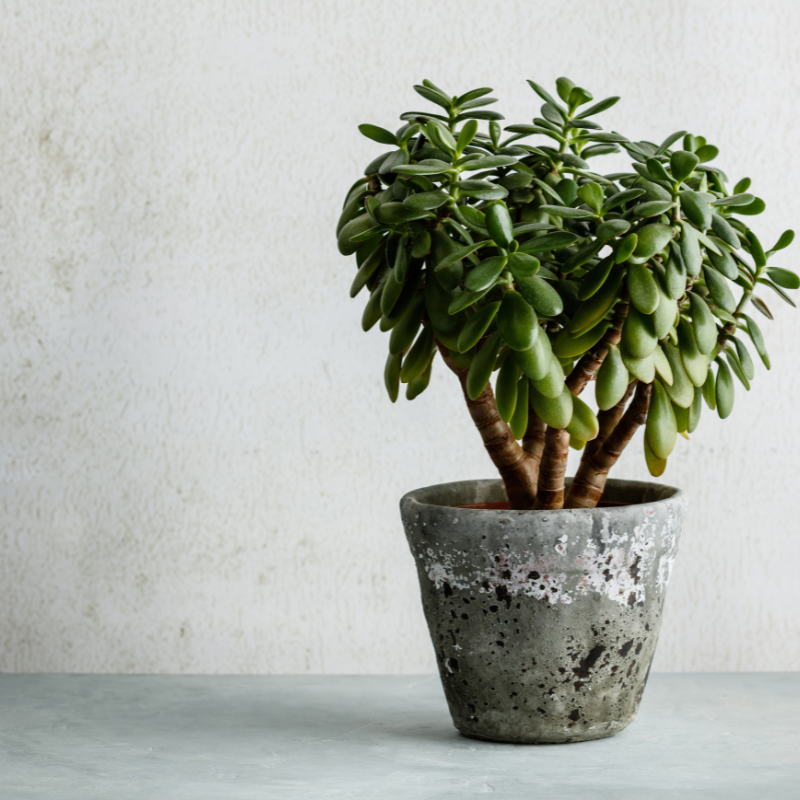
As its name suggests, this little Jade tree is just 40 cm tall, and you can confine this dwarf Jade plant even further in size when you grow it in a pot or container.
Surprisingly, this Crassula Ovata was a chance discovery by a nursery in 2015.
13. Crassula Ovata Minima
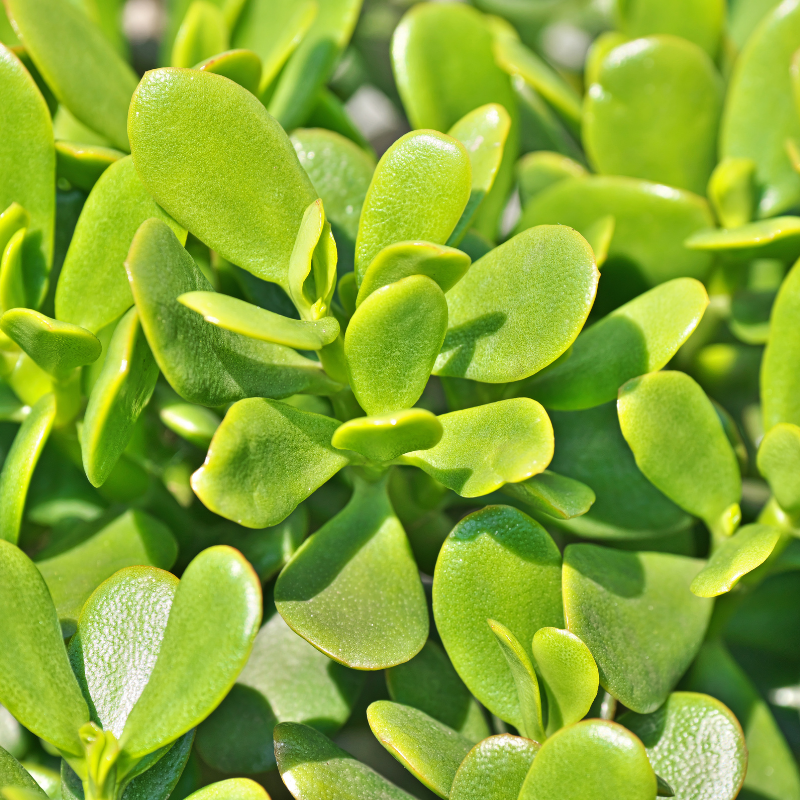
Loved by gardeners and growers for its full flowers and foliage, Minima grows up to 60 cm in height.
Its compact growing habit and the clustering of pink and white flowers appearing in autumn make this an attractive Jade plant.
14. Crassula Ovata Pink
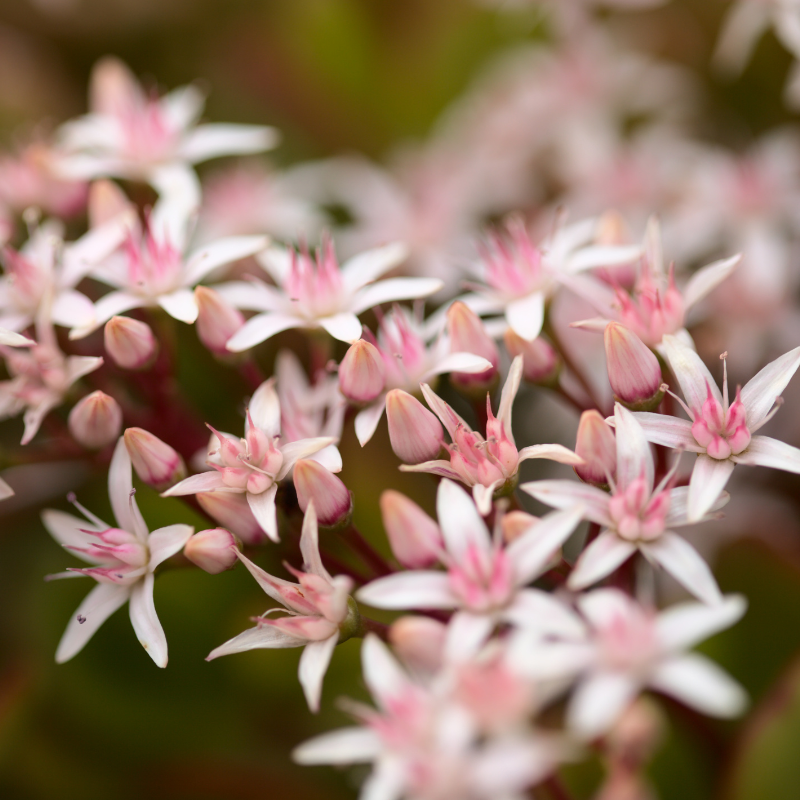
With 1 m in height growth over 5 years, this Crassula Ovata Jade plant is very slow-growing.
Its flowers appear during autumn in clusters of pink flowers.
In extremely dry conditions, this Jade plant can develop red-colored foliage which indicates it’s under stress.
15. Crassula Ovata Pixie
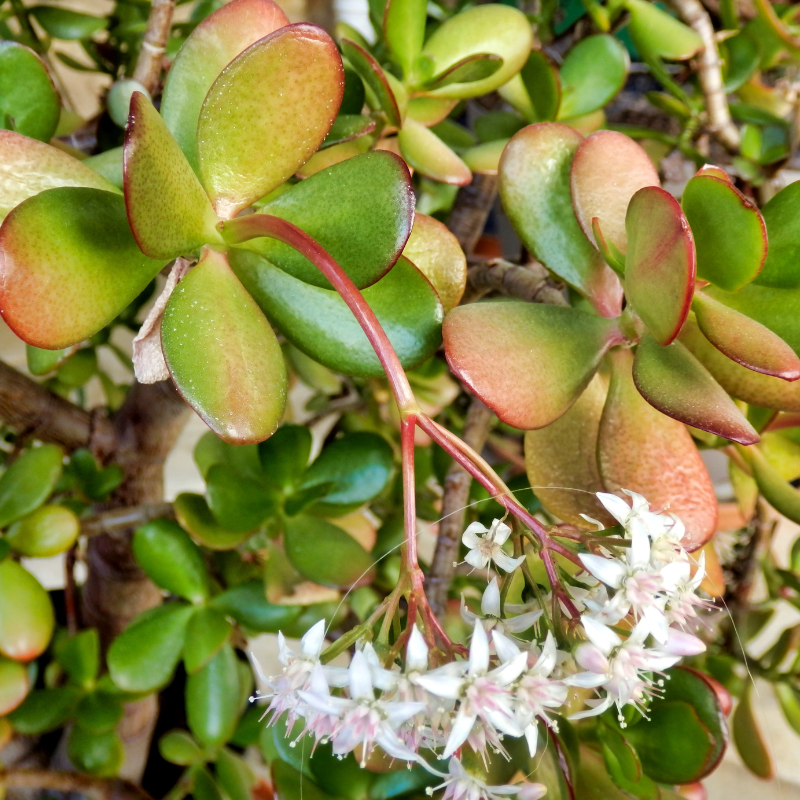
The Pixie Jade tree is particularly grown for its ability to grow even in small pots. It can reach up to 60 cm in height, although you can control the height by trimming the leaves.
The pinkish-white flowers cluster beautifully at the top of the plant.
16. Crassula Ovata Ruby
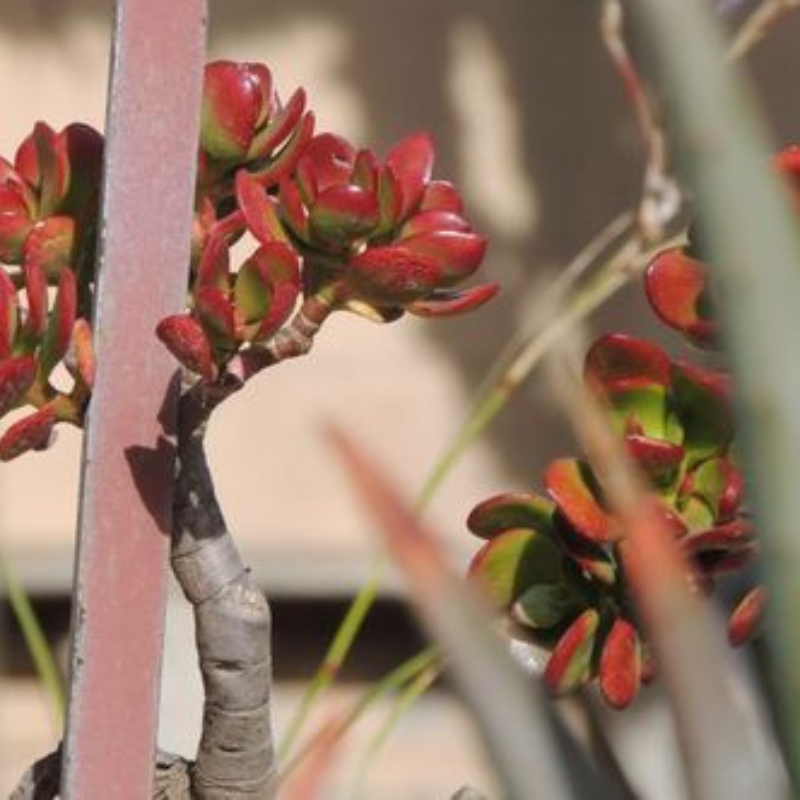
The ruby-red blush is what makes this Jade tree truly stand out. Add the clustering of pink and white flowers, and this plant creates an impressive display.
Just like other Jade tree varieties, Ruby is extremely slow-growing, with 1m in 5 years.
17. Crassula Ovata Sienna
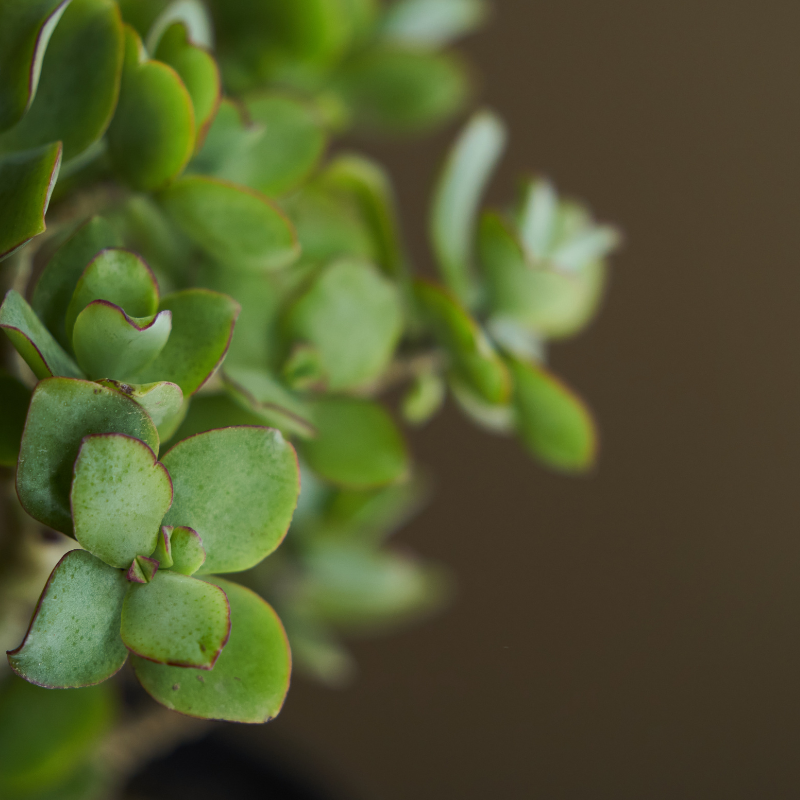
Put the Sienna Jade variety into a pot and you can easily control its natural size of 60 cm. It also responds well to trimming, and it’s reasonably drought tolerant.
An offshoot from Crassula Ovata Ruby, this variety grows in compact branches and clusters. Perfect for containerization.
18. Crassula Ovata Variegata
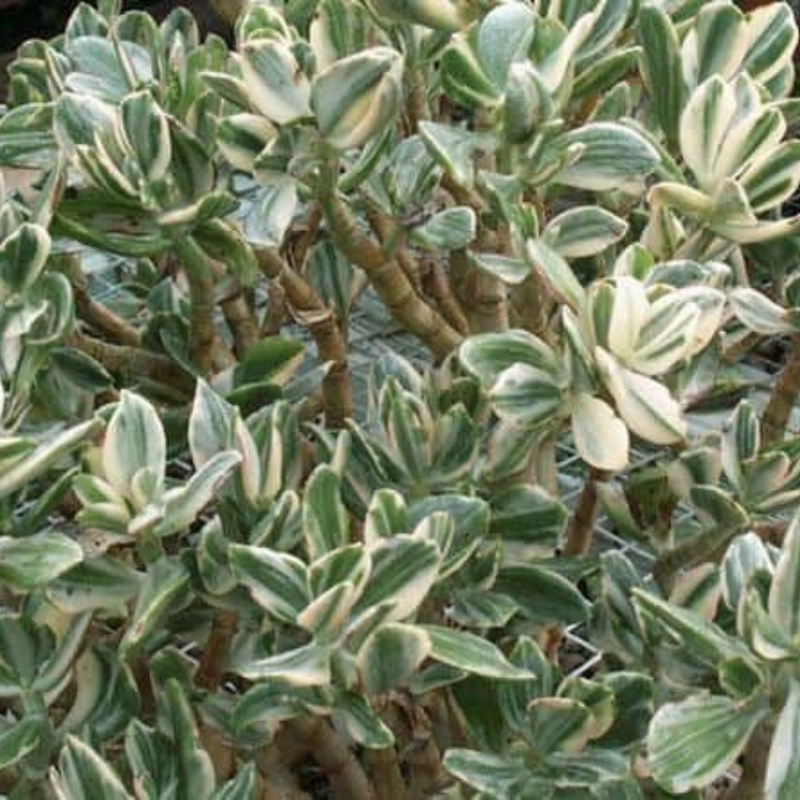
Variegata is a little more unusual compared to other Jade plant varieties. It grows small green leaves with cream markings.
19. Crassula Arborescens Large Leaf Form
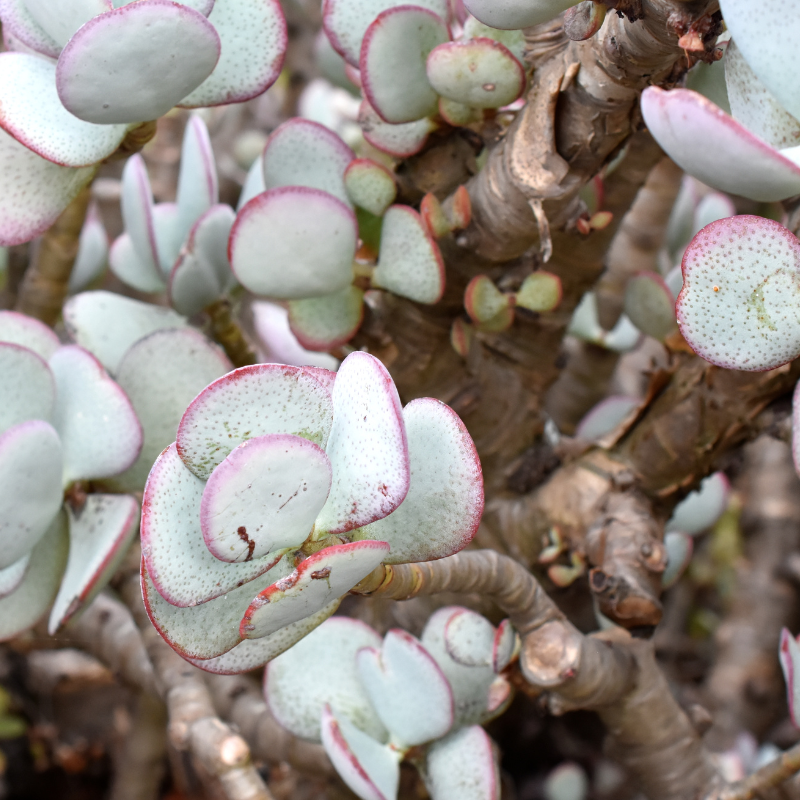
At an average Jade tree height of 60 cm, the large leaf form of Crassula Arborescens stands out with its large leaves.
This slow-growing succulent shrub has grayish-blue foliage with red edges.
20. Portulacaria Afra
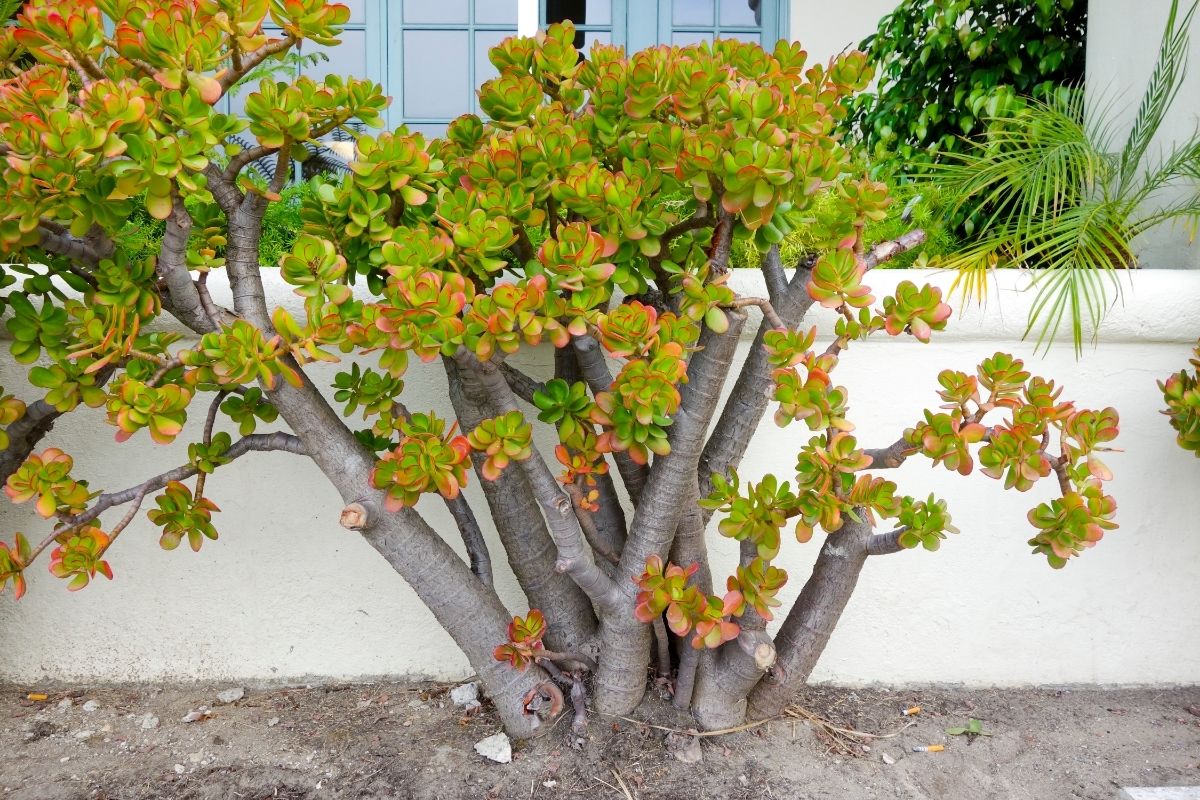
This Jade plant isn’t commonly grown because of its flowers. Portulacaria Afra can grow up to 2 m tall and it’s well-liked by landscapers because you can easily control its growth by shaping and trimming.
This makes it a decorative succulent, showing thick, small leaves and a dark mahogany stem.
A big plus of this type of Jade tree is that it’s drought tolerant and can withstand longer periods of heat.
21. Portulacaria Afra Aurea
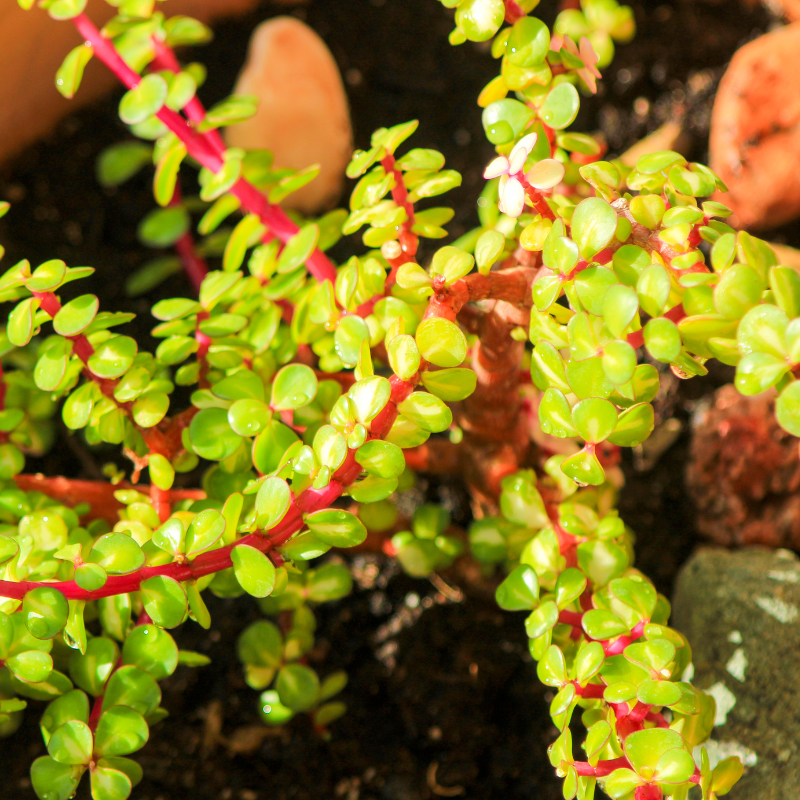
Another beautiful variety of succulent plants, Aurea grows lavender and pink colored flowers which are rarely seen.
At a height of 1m, this Jade plant is slow-growing and covers a fair bit of ground. Its brown and reddish stem together with yellow leaves makes this an interesting outdoor plant.
You can grow Portulacaria Afra Aurea in full sun or partial shade. Bear in mind that this variety changes its leaf color depending on the time of year, the fertilizer you use, and the type of water.
22. Portulacaria Afra Cascade
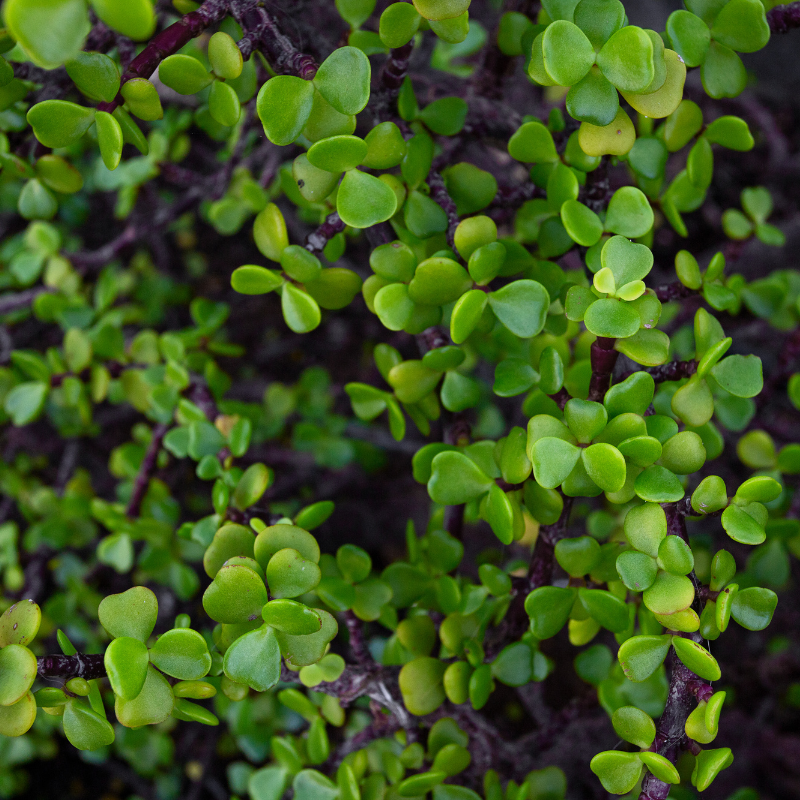
Cascade is another Jade green succulent that doesn’t flower when you cultivate it. Its size can vary widely from 15 cm as a dwarf variety up to 1m.
It can be grown as ground cover showing round leaves. This Jade tree is well adapted to its native habitat in Australia and South Africa as it’s drought and heat resistant.
23. Portulacaria Afra Large Leaf
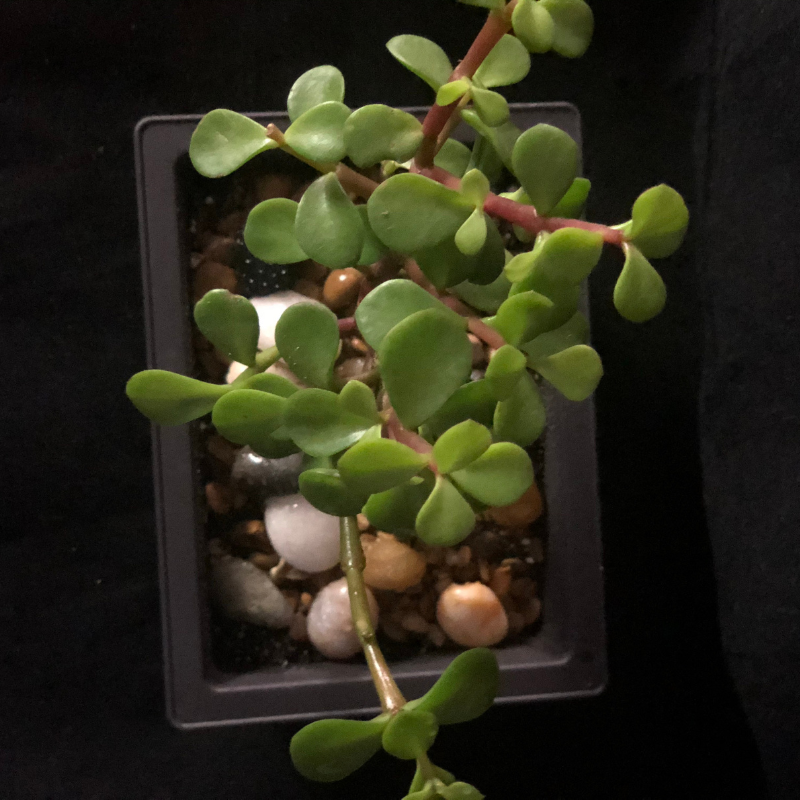
At 2 m tall, this large leaf Jade green succulent is perfect for landscaping projects where you want to create a statement.
Although it isn’t growing as a flowering plant, Portulacaria Afra Large Leaf provides an ideal decorative appearance with a dark red stem.
24. Crassula Ovata Crosby Red Variegata
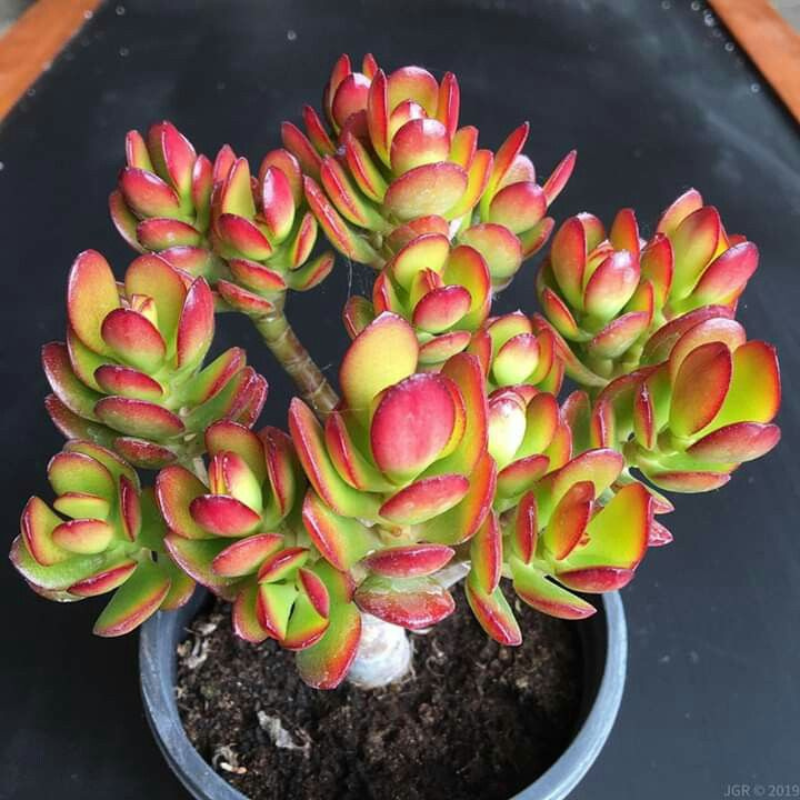
One of the newest varieties, the Crosby Red Variegata has not even been seen flowering yet. As its name suggests, it’s a cross between the variegated variety and Crosby Red.
Its slow-growing foliage changes with stress and the seasons of the year, just like with most Jade plants.
Final Thoughts
Jade trees, also known as Jade plants, originate from South Africa and Mozambique. Their thick, fleshy leaves and hardy stems have made them very resilient to heat.
The great variety of these hardy succulents, together with their low maintenance needs, have made Jade plants very popular as houseplants around the world.
They are also well known as money trees or money plants, which means they are a perfect gift for all occasions.
Editor’s Recommendations
10 Different Types Of Indian Trees







